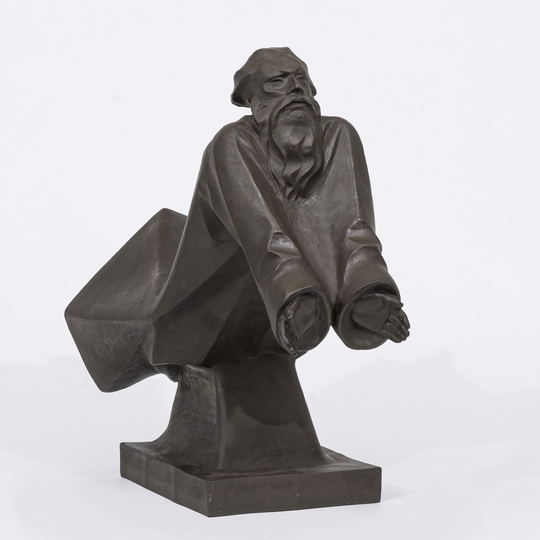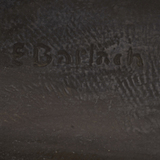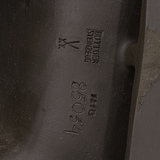Floating God the Father
Ernst Barlach (Wedel/Holst. 1870 - Rostock 1938)

Lot-No. 545
Proceeds : 3.500 €
Meissen. Designed 1922, made after 1973. Böttger stone ware. H. 50,5 x w. 33 cm x d. 50 cm. Signed on the base EBarlach, crossed swords mark (2 grind marks), model no. 131 B and 85034. Hovering figure in a long, cubic robe, hands stretched out in a gesture of blessing or creation - Literature: Schult I 276; Laur 353 - Provenance: Acquired in 1984 from E.B. Lattorff, Hamburg; Private property, Hamburg - German sculptor, writer and illustrator. B. studied 1888-95 at the Hamburg Kunstgewerbeschule and at the Dresden academy. He lived in Paris for two years before working as ceramicist in Hamburg, among others for the Altona manufactory Mutz. A journey to Russia became distinctive for his work. He first exhibited sculptures from Russian folk life at the Berlin secession in 1907. Subsequently he received many important public commissions. B. was very much pressurized by the Nazis, a. many of his works were seized or destroyed. Today he is appreciated as one of the most important sculptors of the 20th cent. Mus.: Hamburg (Ernst Barlach Haus), Nuremberg (Germanisches Nationalmuseum), Schwerin a. others. Lit.: Schult (cat. rais.) a. others.
Ernst Barlach: Floating God the Father
Ernst Barlach (Wedel/Holst. 1870 - Rostock 1938)
Floating God the Father
Lot-No. 545
Proceeds : 3.500 €
Meissen. Designed 1922, made after 1973. Böttger stone ware. H. 50,5 x w. 33 cm x d. 50 cm. Signed on the base EBarlach, crossed swords mark (2 grind marks), model no. 131 B and 85034. Hovering figure in a long, cubic robe, hands stretched out in a gesture of blessing or creation - Literature: Schult I 276; Laur 353 - Provenance: Acquired in 1984 from E.B. Lattorff, Hamburg; Private property, Hamburg - German sculptor, writer and illustrator. B. studied 1888-95 at the Hamburg Kunstgewerbeschule and at the Dresden academy. He lived in Paris for two years before working as ceramicist in Hamburg, among others for the Altona manufactory Mutz. A journey to Russia became distinctive for his work. He first exhibited sculptures from Russian folk life at the Berlin secession in 1907. Subsequently he received many important public commissions. B. was very much pressurized by the Nazis, a. many of his works were seized or destroyed. Today he is appreciated as one of the most important sculptors of the 20th cent. Mus.: Hamburg (Ernst Barlach Haus), Nuremberg (Germanisches Nationalmuseum), Schwerin a. others. Lit.: Schult (cat. rais.) a. others.






